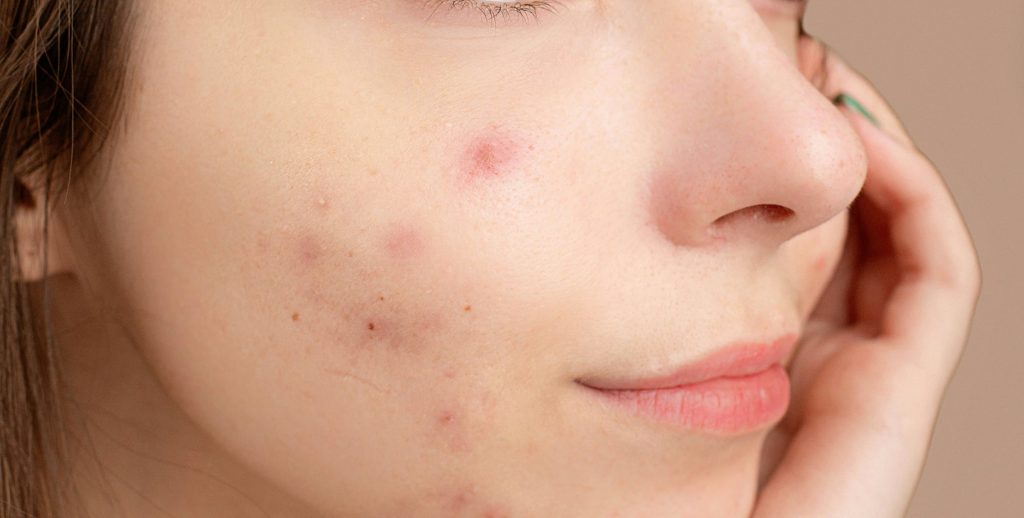Facial rashes can come in all shapes and sizes, and not all are harmful or necessarily something to worry about. A rash on the face can be here today and gone tomorrow.
Facial rashes are usually caused by something, whether it’s an allergic reaction to new clothes, an acne breakout, or an insect bite. Some facial rashes can also be caused by STDs.
If you have a rash on your face and are concerned that it might be caused by an STD, keep reading to learn more about what might be causing it.
Rashes on the face can be caused by STDs. If you think you may have an infection, get tested today.
What is an STD?
STDs are infections spread from person to person through sexual contact. Intercourse can include vaginal, anal, and oral sex, but it can also include certain types of foreplay, such as finger and hand work.
However, some STDs can be transmitted in other ways, such as kissing, blood transfusions, sharing needles, and more.
While many STDs can cause some serious health complications if left untreated, most are curable and others can be managed with the right medication and care.
There is a lot of stigma around STDs, but getting an STD is no different than any other infection. What’s important is to identify what might be causing it and treat it so you can live a happy, healthy life.
What counts as a facial rash?
Rashes on the face can vary depending on the underlying cause. Facial rashes tend to include:
- Changes in color: This is one of the most common symptoms of a rash on the face. When you have a rash, the skin tends to change color, the shade varies depending on the condition. The skin may appear red, dark, brown or some other color depending on your skin tone.
- Changes in texture and consistency: When you develop a rash, the texture of the skin may change. Depending on the condition, the skin can become dry and flaky, leading to a scaly appearance, or it can become wet and oily.
- Itching: Itching is a common symptom of many types of rashes. Itchy sensations can range from mild irritation to severe itchy sensations that cannot be relieved.
- Pain: Some rashes may cause discomfort or pain.
- Bumps: Rashes may cause small bumps to form on the skin. These lumps can be filled with fluid or they can be solid.
Remember, these symptoms can occur alone or in combination and vary in intensity.
What STD can cause a rash on the face?
When most people think of having an STD, they think of symptoms affecting the genitals. And while this often happens, some STDs can also cause a rash on the face.
Here are some STDs that can cause them.
Herpes
Both oral and genital herpes can cause fluid-filled blisters to appear on the face.
Herpes simplex type 1, the herpes virus that usually causes cold sores, is usually contracted by kissing someone who has an outbreak of blisters in and around their mouth. An outbreak of HSV 1 can cause spots, fluid-filled blisters, sores and redness around the mouth. Although these symptoms are not technically classified as a rash, many people could easily mistake them for a rash.
Herpes simplex type 2, the virus that tends to cause genital herpes, can also appear on the face. This usually happens when you have oral sex on someone who has an active outbreak of genital herpes. The virus then infects the area around the mouth, which can lead to blisters and sores around the mouth, as with oral herpes.
Get tested for herpes in the privacy of your own home with Better2Know’s Home Test Kit.
Syphilis
The secondary stage of syphilis can appear four to eight weeks after the primary stage and can sometimes be accompanied by a rash. The rash tends to appear in 90% of people whose syphilis reaches the secondary stage.
The rash often appears on the chest, stomach, pelvis and back and can sometimes develop on the palms of the hands and soles of the feet. The rash may appear rough, red, or reddish-brown. In some cases, it may be so faint that it is difficult to see. The rash may also appear in papules or plaques.
The texture of the rash may be rough to the touch. Unlike many other rashes, a syphilis rash usually does not itch. The rash may last for about two to six weeks.
The rash may also develop alongside other symptoms. These may include:
- Fatigue
- Unexplained weight loss
- Headaches
- Sore throat
- Loss of appetite
- Muscle and joint pain
- Hair loss
- Fever
Gonorrhea
A gonorrheal rash is a rare but serious symptom of disseminated gonococcal infection (DGI). DGI occurs when the bacteria that cause a gonorrhea infection enter the bloodstream and spread throughout the body. DGI occurs in about 3% of people with gonorrhea, but a rash occurs in 75% of people with DGI.
The rash may appear as small red spots or develop into larger fluid-filled blisters. It can be presented with many different types of damage or stainsincluding:
- Fetechias: Tiny red spots that appear when bleeding occurs under the skin.
- Spots: Flat spots on the skin that differ in color from the surrounding area.
- Papillomas: Raised, fixed points that can appear in various sizes and colors.
- Plaques: Small, inflamed bumps filled with pus that look like a pimple.
- Purses: Small fluid-filled blisters that often itch.
- Bullae: Larger blisters filled with fluid that can extend deeper into the skin.
HIV
Human immunodeficiency virus (HIV) can also cause a rash. This rash usually appears within the first two months after contracting the virus. It is a common symptom that can occur in both the early and later stages of HIV infection.
Many different types of rash can occur with HIV:
- Seborrheic dermatitis: This rash tends to appear in the acute stage of HIV and is characterized by redness, dandruff and yellow, oily scales. Seborrheic dermatitis tends to occur in areas of the skin with sebaceous glands (oil glands), such as the scalp.
- Eosinophilic folliculitis: This rash is characterized by itchy, red bumps that focus on hair follicles on the upper body and head. This type of rash tends to appear in the later stages of HIV.
- Prurigo nodularis: This rash is characterized by itchy, scab-like bumps on the skin, mostly on the feet and hands. This type of rash affects people with extremely weakened immune systems.
- Papular pruritic rash: This rash is characterized by itchy bumps on the hands, feet, face and trunk.
It is important to note that this is just a short list and many other types of rash can occur during an HIV infection.
If you’re worried about HIV, test at home with one of Better2Know’s home test kits.
Scabies
Scabies is a skin condition caused by the mite Sarcoptes scabiei. These mites burrow into the skin, causing a severe itchy rash. The rash appears with red papules, occasional vesicles and pustules. The itching is often worse at night.
The rash can appear anywhere on the body. In some cases, it can also affect the face. The rash tends to appear as small papules that can vary in color depending on skin tone. These papules can also be accompanied by:
- Excursions
- Linear scratch marks
- Crust (hyperkeratosis as seen in a crust)

Don’t leave your sexual health to chance. Confirm your status with Better2Know today.
What else can cause a rash on the face?
There are many other conditions that can cause a rash on the face.
Autoimmune disease
Autoimmune diseases such as lupus or bullous pemphigoid are known to affect the skin. Associated rashes may appear in flares or be the first obvious symptoms. Sudden blistering can be a sign of bullous pemphigoid.
Allergies
Allergic reactions to substances such as certain foods, drugs or environmental factors can cause a rash on the face.
Dermatitis
Dermatitis is a general term for inflammation of the skin. It can be caused by contact with irritants or allergens, or it can be a symptom of conditions such as eczema or psoriasis.
Acne
Acne is a common skin condition that causes blemishes, oily skin, and sometimes skin that is hot or painful to the touch.
Rosacea
It is a long-term skin condition that mainly affects the face. Symptoms include redness, pimples, swelling and superficial dilated blood vessels.
Final thoughts
Facial rashes can be alarming, but more often than not they indicate conditions that are highly treatable.
If you think you may have a facial rash caused by an STD, you can get tested with Better2Know today. Call the number at the top of this page to speak to one of our trained sexual health counselors or click the button below to start your own online booking process.

You can find out the status of your sexual health at a clinic near you.
